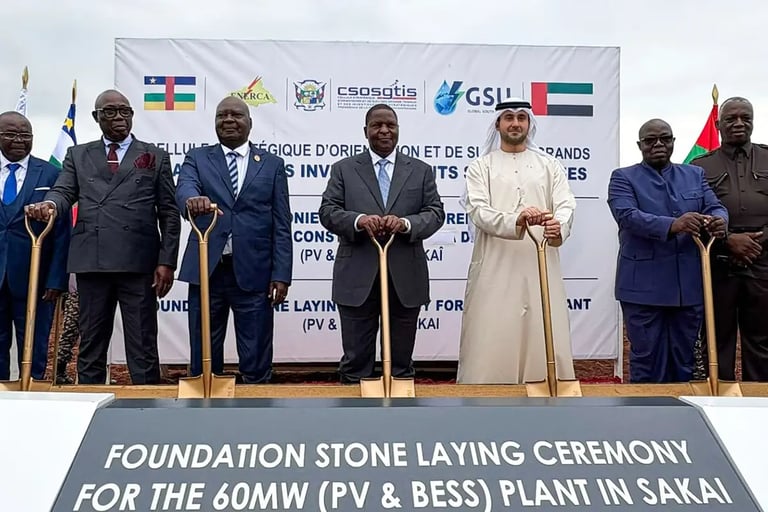The performance of the UAE’s commercial property sector over the past two years has continued to outpace expectations. Demand for high-quality office space has continued to rise, driven by ongoing economic growth, the government’s business-friendly policies, and an ongoing influx of international firms relocating or setting up regional headquarters.
In 2024, Dubai saw a supply crunch with 650,000 square feet of office space delivered, most of it pre-leased. In 2025, while 1.66 million square feet of new commercial office space is becoming available, demand is still exceeding supply.
Rental rates have climbed sharply as a result, particularly in prime locations where supply remains tight and competition for prime properties is fierce.
For Real Estate Investment Trusts (REITs), this stage of the property market cycle offers a range of key challenges and opportunities. In the case of Emirates REIT, the market’s recent dynamism has supported some of the best results in our history.

Higher occupancy and rental rates have driven revenue to an all-time high, while the buoyancy of the market has enabled the strategic divestment of select properties in 2024, the proceeds from which were used to reduce overall financing.
However, periods of stability present their own set of challenges. People invest in REITs expecting the trust to outperform the market, so the REIT manager needs to find ways to continue to overdeliver for investors.
This requires us to find new ways to unlock value through smarter leasing strategies, tenant retention and the long-term evolution of our portfolio. But we believe we managed and the Q1 2025 results speak for themselves.
How REITs succeed in tight markets
During periods of supply constraint, REITs cannot rely on acquisitions to grow in size. The reality is that interest rates are likely to outpace returns in the current period, so acquiring new assets is difficult. There are still opportunities in the market worth pursuing — distressed properties available at a discount, prime properties in the Emirates beyond Abu Dhabi and Dubai — but competition for these can be fierce.
So, our focus turns more on the existing properties within our portfolio, ensuring these buildings meet modern expectations around sustainability, flexibility and technology, while at the same time pushing occupancy to the maximum.

Evolving tenant expectations
The most striking aspect of today’s office market is the transformation of tenant expectations. Traditional long-term lease structures are moving towards more agile and flexible arrangements, especially amongs companies that are scaling quickly. These businesses demand flexibility, seeking spaces that can expand or contract with their business needs, and in turn, are willing to pay premium rates for this privilege.
Redefining sustainability norms
Across the GCC, regulatory frameworks and national development agendas are placing growing emphasis on green buildings and carbon reduction. Simultaneously, investor sentiment is increasingly aligned with ESG criteria, driving capital toward assets that meet measurable sustainability benchmarks.
This dual pressure, from both regulators and capital markets, is changing tenant behavior. Corporate occupiers, particularly multinational firms and government-related organizations, now expect sustainability to be built into the fabric of a property.
This has created a two-tiered market where sustainable buildings command premium rents, while older stock faces the challenge of underperformance or the requirement to invest in refurbishment.
The digital economy’s ripple effect
The growth of the digital economy is also reshaping demand in unexpected ways. Business parks and innovation districts are no longer dominated solely by technology firms. Instead, they are home to a cross-section of industries, from fintech and logistics to AI-driven platforms, creating new expectations for office space.
These tenants often require larger floorplates, robust IT infrastructure, and layouts that support collaboration and hybrid work models. This convergence of industries within digital hubs is creating demand for more adaptable, future-ready commercial environments, accelerating the pace at which legacy office assets must evolve to avoid the risk of falling behind.
Europe and the US’s growing range of office campuses, where the workspace encompasses facilities and services designed to make employees happier and more productive, offer an interesting and under-explored model for development in the GCC.

Addressing the challenge of supply
In the long-term, REITs will need to play a part in addressing the factor that has driven so much recent success — the commercial sector supply constraint. Unlike the residential or hospitality sectors, which continue to see robust development activity, commercial office development has lagged behind.
The challenge here is to really incentivize developers to build office assets, which so far, has proven to be difficult. If demand continues to outstrip supply, pre-leasing may become the only option for occupiers looking to secure space in high-demand zones.
Yet, as more space is locked in before construction completes, availability tightens further, putting existing REIT portfolios in a stronger position amid limited new supply. Occupancy remains high, rental rates are strengthening, and the sector is benefiting from the scarcity dynamic, though this also calls for disciplined, strategic asset selection moving forward.
Looking ahead
The outlook for the remainder of 2025 and beyond remains positive, supported by the UAE’s economic diversification efforts. Government-led initiatives such as net zero commitments and freezone expansion are generating new pockets of demand across the commercial landscape.
For REITs operating in the Gulf, this environment represents a rare window to consolidate positions in proven markets and shape the future of work environments. The increasing focus on sustainability and quality, combined with structural under-supply in prime locations, positions premium assets for sustained growth.
The REIT managers who can navigate these dynamics while delivering what modern tenants require will define the next chapter of commercial real estate in the region.

Thierry Delvaux is the CEO of Equitativa (Dubai) Limited.








